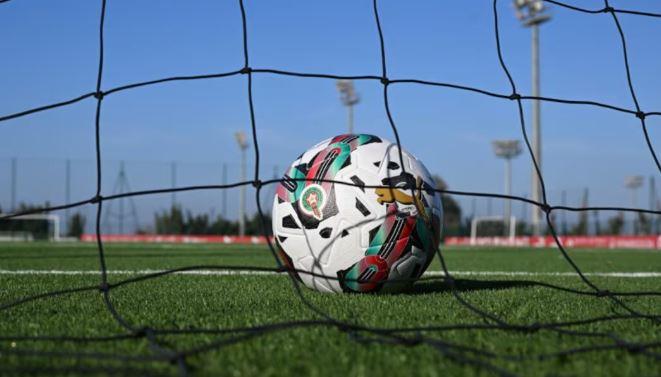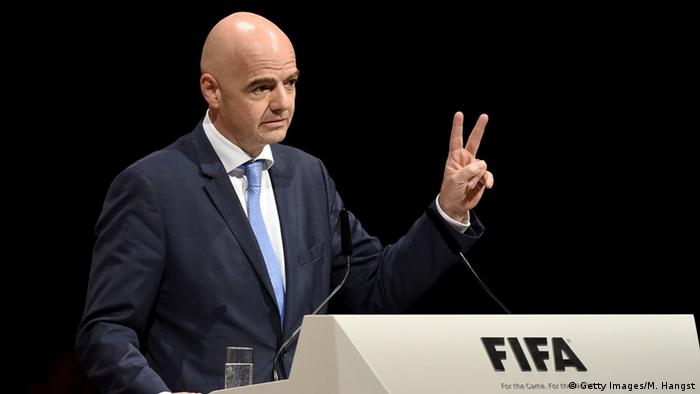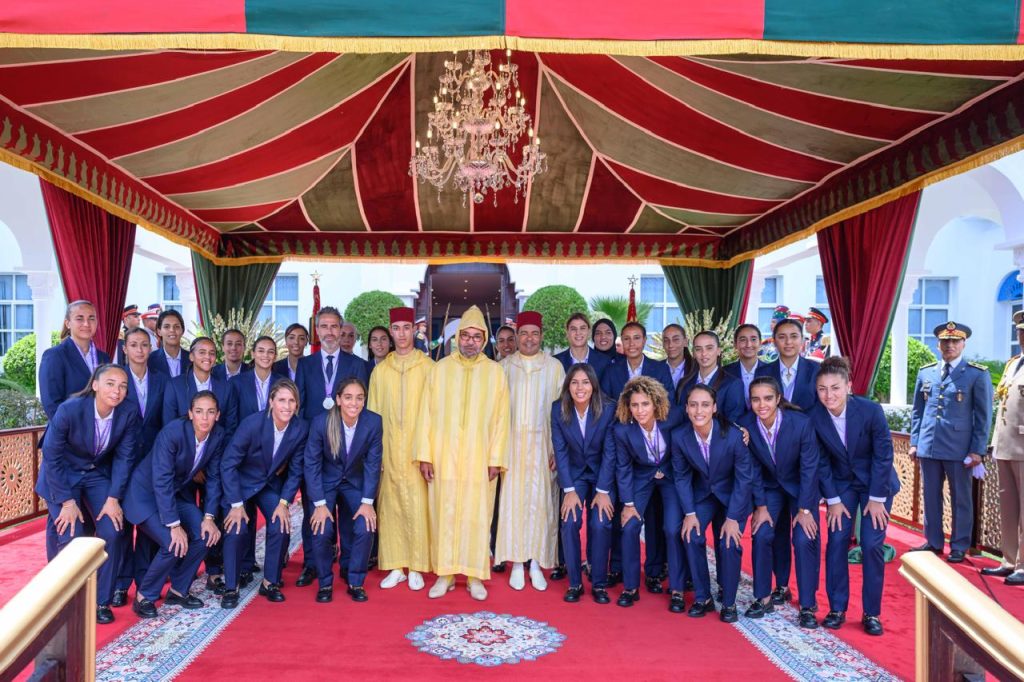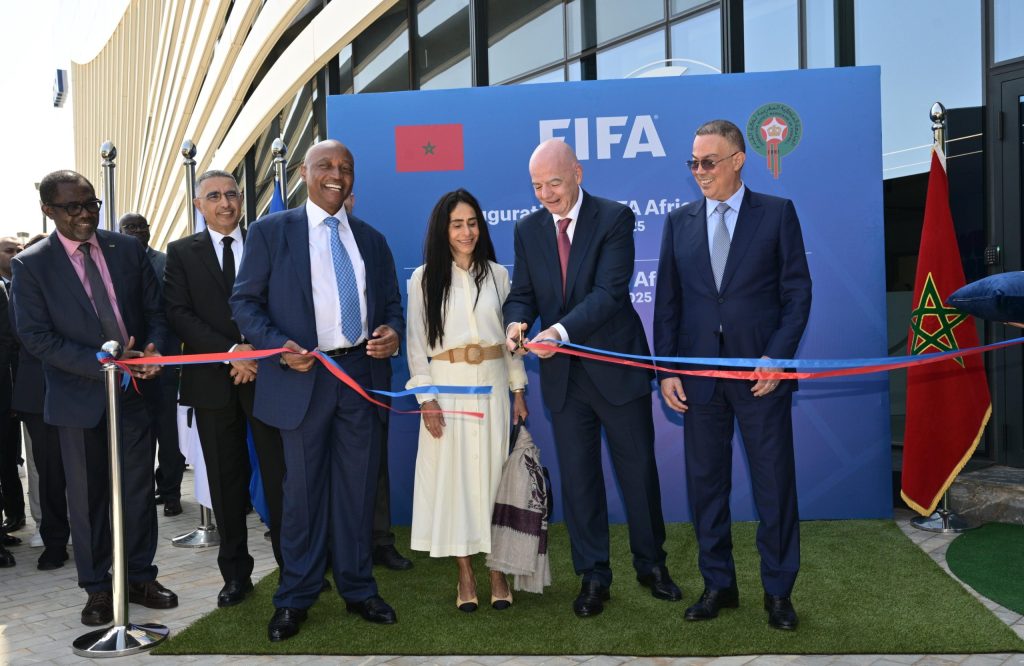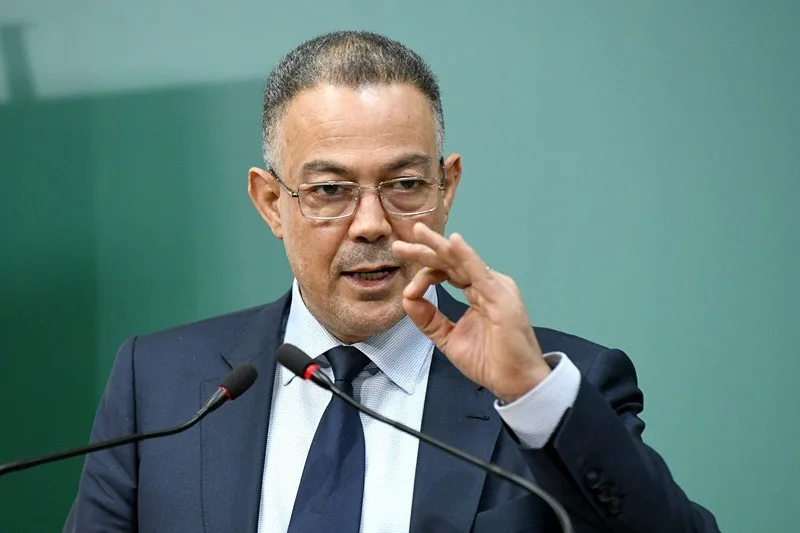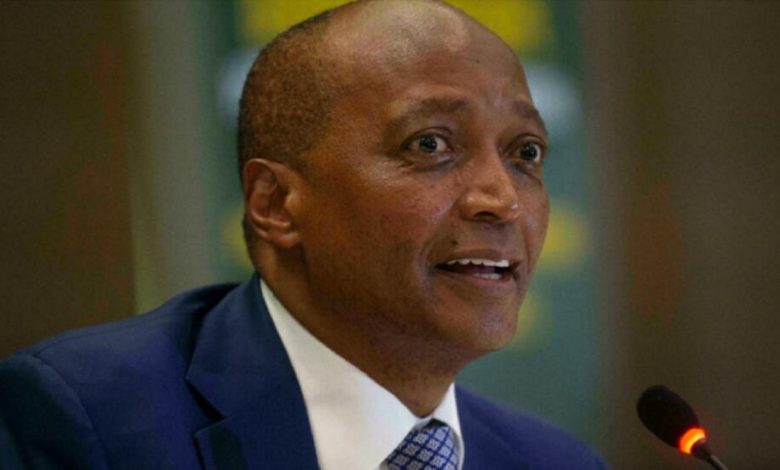As it prepares to host major international sporting events, the Kingdom of Morocco has placed football at the heart of its public policy, undertaking massive investments in infrastructure, according to the French sports daily L’Équipe.
“Behind the resilience of Hakim Ziyech and Achraf Hakimi during the 2022 Qatar World Cup—a performance that captivated the world—lies another reality: that of a country that has embedded football into its core public strategies,” writes the renowned outlet in an article named “Ahead of the 2030 World Cup, Morocco Pulls Out All Stops to Enhance Infrastructure.”
In an in-depth feature exploring “the foundations of this rapidly growing footballing nation,” the newspaper highlights, with supporting photographs, the Mohammed VI Football Complex in Salé, inaugurated by His Majesty King Mohammed VI in 2019.
Spread over 35 hectares on the edge of the vast Maâmora Forest, the complex cost nearly €60 million and should be profitable within six years, according to L’Équipe, citing Fouzi Lekjaa, President of the Royal Moroccan Football Federation (FRMF).
“The establishment of the complex has allowed us to host all 25 national teams on-site, including futsal and beach soccer squads. This has significantly reduced accommodation and transport costs,” explains Lekjaa.
The center, managed as a joint-stock company, is a hub for a wide range of events and audiences: from referee academy classes and federation training seminars to CAF meetings and even the African Ballon d’Or ceremony. According to the article’s author, several FIFA departments will soon be based there, near the future national football museum.
The complex also includes eleven football pitches, five hotels with spacious rooms, a mosque next to an Olympic swimming pool, and a cutting-edge medical center, the report adds.
For the purposes of the article, L’Équipe also visited the Ibn Batouta Stadium in Tangier, which is undergoing extensive renovations in preparation for upcoming competitions.
Originally inaugurated in 2011 with over 45,000 seats surrounding an athletics track, the stadium was first refurbished in 2019. However, with the 2030 World Cup on the horizon, the venue is now being transformed to meet FIFA standards, expanding to 62,544 seats, adding luxury boxes, and enhancing all facilities.
As part of this large-scale transformation, 1,200 workers have installed a 55,000 m² metal roof structure, reportedly the second-largest in the world after the Maracanã. The Kingdom has invested more than €340 million to upgrade the stadium, the article details.
“With rows of seats in ocean blue and soft white tones, the Tangier stadium evokes a sense of calm,” the paper continues, describing “immense corridors around the pitch, leading to nearly 142 skyboxes, some vast as continents, others perched high with panoramic views of the Mediterranean.”
Ahead of the 2030 World Cup, Morocco will host two major trial events: the Women’s Africa Cup of Nations (July 5–26), starting this Saturday, and the Men’s edition (December 21 – January 18).
In recent years, Morocco has made substantial investments in its sports sector, the specialized publication concludes.
